|
|
|
Tiger
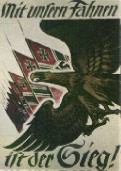
Panzerkampfwagen VI "Tiger"
PzKpfw VI Ausf. E/.H - Tiger I Sd.Kfz. 181
The Tiger I was armed with a powerful 88mm gun and its thick armor made it virtually indestructible. They were dangerous opponents to every Allied tank. The rule applied by the British concerning the engagement of Tigers was that five Shermans were needed to destroy a single Tiger. Conceived in 1937 as a heavy assault tank, the Tiger was developed in early 1942. Officially there were only two types produced - Ausf H and Ausf E. Between the years of 1942 and 1945 some 1,350 were built.
The most famous German battle tank - thought not the best - the Tiger generated an aura of invincibility giving it a psychological advantage of great value. This reputation was justified by events such as the action in which SS-Obersturmfuhrer Wittmann commanding a single Tiger on the Villers Bocage road in Normandy on June 13 1944, destroyed 25 half-tracks and tanks, effectively blocking the road and halting the advance of a complete armoured division. Furthermore he had already destroyed 119 Soviet tanks in his service on the Russian Front.
The Tiger was developed by the Henschel company, and it was the culmination of a long series of experimental vehicles dating from 1937. Weighing 56 tons, it carried armour up to 100mm thick and was armed with the 8.8cm KwK36 gun, the tank version of the celebrated "88" anti-aircraft gun. This weapon could pierce 105mm of armour at 1,000 meters, more than adequate to deal with any Allied tank. The hull was box-like, scorning the advantage of the sloped plate and relying entirely on thickness. The turret was thick and massive, with vertical sides, and so heavy that it needed low-geared gears to turn it. A foot-operated hydraulic traversing gear was also fitted but it was too slow, and this led to a tactical disadvantage since it was possible to sneak up on the Tiger from the side or rear and loose off a quick shot or two before the gunner could bring the ponderous turret and gun to bear on his assailant.
Power was provided by 21-litre V-12 Maybach petrol engine, later changed to a 24-litre model delivering 700bhp. This was driven through an eight-speed preselector gearbox to a transverse transmission unit in the nose, driving the front sprockets of the 28 1/2in. wide tracks. Suspension was maintained by overlapping road wheels sprung by torsion bars, which gave a comfortable and stable ride. Arrangements for submersion were included in the design, and the first Tigers could submerge to a depth of 13ft and remain there up to 2.5 hours, a facility which proved extremely useful when crossing some of the larger Russian rivers. This facility, though, was expensive and difficult to provide and was abandoned after the first 495 tanks had been made.
The first combat reputation of the Tiger in attack was fairly poor; in its first combats in Russian it was invariably sent into action on difficult terrain, over forest tracks through marshlands, in conditions where the Tigers heavy weight placed it in a massive disadvantage. Similarly, in North Africa in 1942 the first Tiger attacks were stopped by two British 6pdr (57mm) guns who held their fire until the Tigers were less than 500 yards away and thus defeated both tanks. In Normandy 1944 its reputation in defence was almost invincible, waiting and picking off Allied tanks at will. It is claimed that the Tiger tank, under a experienced commander, had a average kill ratio of 18-1. This goes to show the massive destructive power of the Tiger and its deadly "88" when in the right hands.
The Tiger remained in production for two years, from August 1942 until August 1944, when it was superseded by the "King Tiger" . A total of 1,350 tanks were made in that time, indicative of the fact that the Tiger, good as it was, was conceived primarily as a fighting machine and not as a mass-production machine.
Crew: 5
Weight: 57.0 ton
Dimensions: 8.45 x 3.70 x 2.93
Armor: 30 - 100 mm
Range: 140 km
Speed (max): 38 km/hr
Main gun: 88 mm KwK 36L/56
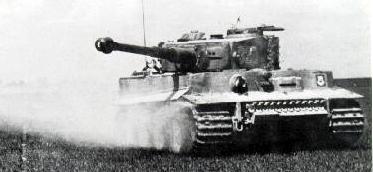
Tiger VIE rolling across open plains in the Ukraine...
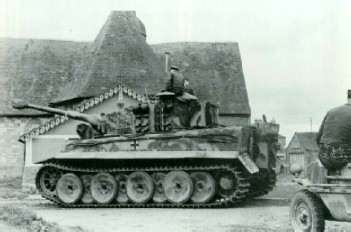
Taking a break from the action in a French village...
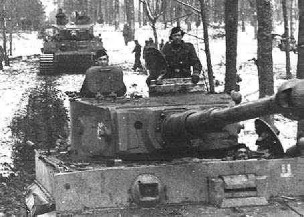
Tank column moving towards the front...
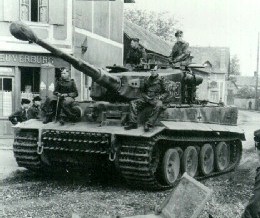
Refitting somewhere in Germany...